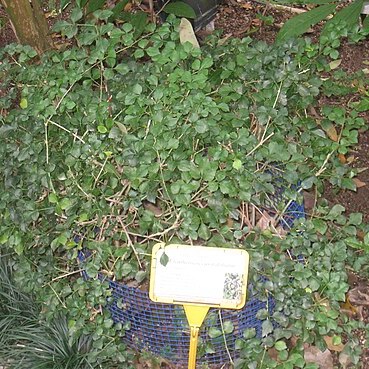Shrubs, scandent or climbers, to 7 m tall. Branches with scattered, recurved prickles. Petiole 2-6 cm, glabrous, prickly; petiolules 2-8 mm; leaflets 3(-5), ovate, elliptic-ovate, or oblong, 4-10 × 2-4.5 cm, papery, adaxially glabrous or slightly setose on midvein and veins, secondary veins 5 or 6 pairs, base cuneate, margin serrulate, apex acute or acuminate. Inflorescence a terminal raceme of umbels or a compound umbel, borne on leafy shoots, with 3-10 umbels; peduncles 2-7 cm; pedicels 1-2 cm. Calyx with 5 teeth, glabrous. Ovary 2-carpellate; styles united to middle. Fruit globose, laterally compressed, 3-4 mm; style bifid, ca. 1.5 mm. Fl. Aug-Nov, fr. Sep-Dec.
A shrub that lies over. It can be 2-4 m tall. There are a few prickles on the branches. The leaves are compound. The leaflets spread out like fingers on a hand. There are 3 leaflets that are broadly oval and 4-10 cm long by 3-6 cm wide. There are fine teeth along the edge. The fruit are flattened and round and 5 mm across. They are black when ripe.

